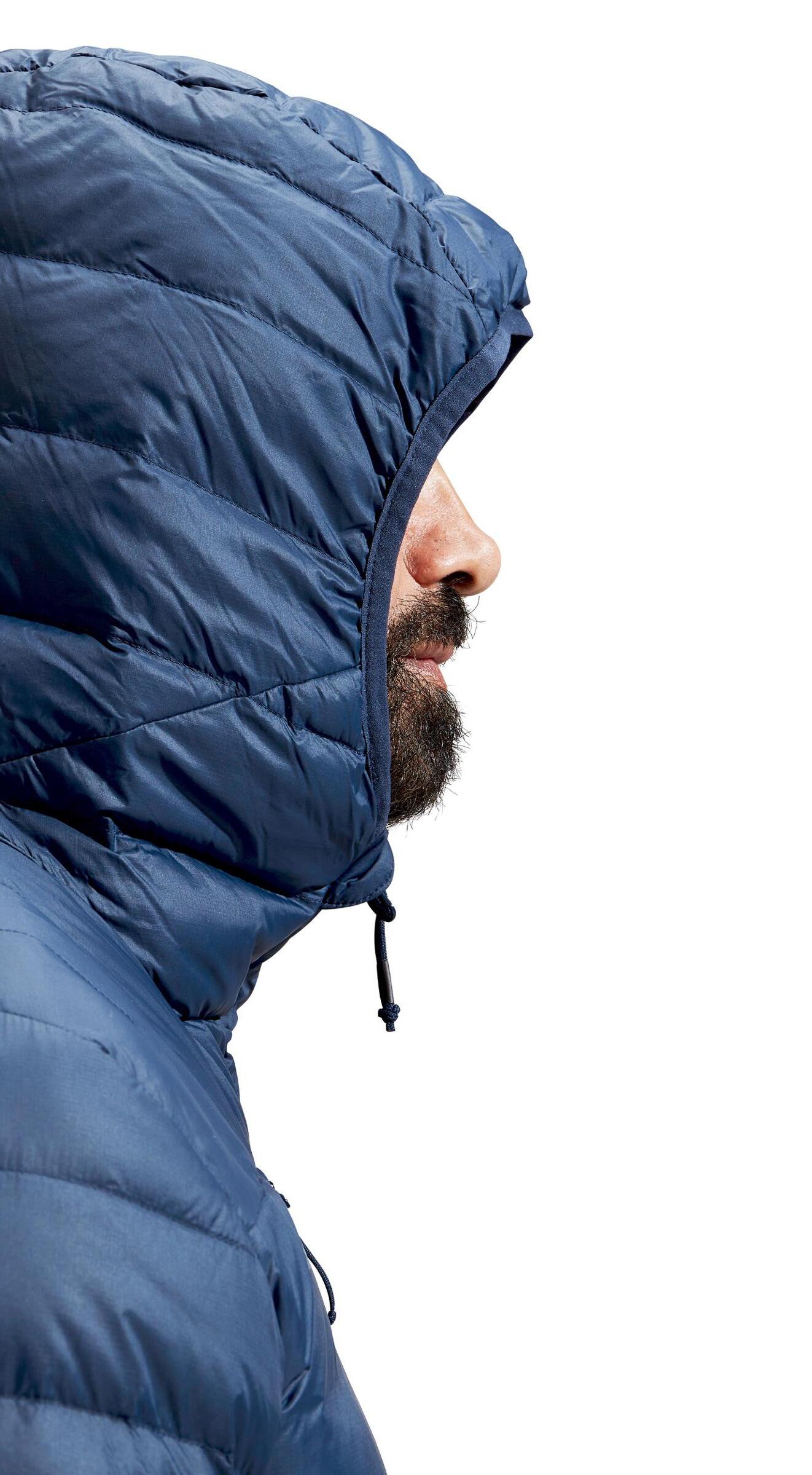DOM TINDALE
INDUSTRIAL AND APPAREL DESIGN






A franchise of men’s and women’s down jackets aimed at Berghaus’ ‘Everyday Outdoor’ consumer. These were briefed to be affordable down jackets with wide appeal and sit on the boundary of lifestyle and outdoor.





I began this brief by researching the market; understanding what other brands are offering with jackets of similar price or spec, whilst also looking for subtle details that might help elevate the aesthetic appeal of the product without impacting simplicity and broad appeal.








Once I had made key decisions on fit/cut, baffle size and feature set, I took to Adobe Illustrator to produce iterations of CADs, exploring how smaller details, construction and seam lines can best reflect the brand design codes, all whilst referencing physical samples to sense check ideas.
For this franchise, I concentrated on the brand’s angular visual language, which focusses on 15° lines and trapezium shapes. I also considered how texture blocking might be used in a quieter way through the faint impressions of the baffles that show through the chest pocket.






I designed a range of Berghaus accessories for the AW22 season. These were primarily lifestyle accessories aimed at a broad consumer group.
I explored how Berghaus’ ‘trango block’ trapezium motif could be interpreted in different ways. This included looking at AOPs, knit patterns and silicone grip on gloves and headbands to help present a cohesive range whilst referencing the brand’s design DNA.

















Common Ground is a concept brand built on the idea of outdoor clothing as a service rather than products that are bought outright. The brand seeks to make the outdoors more accessible, especially to newcomers, by making high-performance outdoor clothing available without the upfront cost commitment, whilst offering a more sustainable alternative to the conventional consumerist business model.

Scan the QR code to watch the video.

There are many benefits to spending time outdoors, but according to ISPO (international sporting goods conference) not enough people are regularly doing so. So what’s stopping people getting outdoors?

• Information is inaccessible
• Overwhelming choice of gear
• Feels expensive
Solution: Reshape the experience around getting outdoors and use the sharing economy to reduce the cost commitment of outdoor gear.
“People no longer want more stuff, they want experiences.”
Ash Pickford, Dalziel & Pow
“Outdoor industry and novices speak completely different languages: It’s alienating!”

Sarah Grant, Insites Consulting at ISPO 2018


This project involved both the product and service design around Common Ground, thinking holistically about the various touchpoints to develop a more robust and consumer-centric offering.


a product range designed around a service and built for rental
PRODUCTS, FABRICS AND
PRODUCTS












MODIFIED DESIGNS BASED ON FEEDBACK
RETURNS & FEEDBACK

ONLINE RENTALS
IN-STORE RENTALS
& FEEDBACK
RETURNS & FEEDBACK
1. To maximise convenience for the consumer and business by relating the products to the service.
2. With the ability to withstand repeated use, laundering and wear and tear.
3. To maximise efficiency of potential repairs to increase product life and facilitate a circular economy.











Designed to be easy to repair with little or no damage to the garment. Components can easily be accessed and zips are in isolated sections to avoid crossing onto surrounding seams or linings.
Hood drawcords are fastened around a polypropylene peak as opposed to stitching into fabric. This ensures strength whilst allowing the cords to be detached without damaging the surrounding area.

Zips are sandwiched between two layers of fabric. All three layers are then stitched together and the thread left exposed to allow for easier access; instead of seam sealing tape, storm flaps are used here for waterproofing.








Through consumer research and understanding of the customer journey, I created a brand image that is welcoming to outdoor novices as well as creating a sense of identity to make the sharing economy an attractive option.




Design a ‘non-literal product’, i.e. a product that has no prescribed function, but which consciously manipulates how an electronic product can be perceived. For this brief, I began by choosing the word ‘extraterrestrial’ as inspiration to develop the semantics of the product.



















“Design or re-design a consumer toy and its packaging to eliminate waste, using circular design principles.”
The Car Board Range is a re-design of Hot Wheels singular car packaging, aimed at making the packaging as fun to use as the toy itself.

BOTH THE TOY AND PACKAGING GO THROUGH THE SAME PRODUCT LIFE CYCLE, HOWEVER, THE PACKAGING IS ONLY USED FOR A VERY SMALL PERIOD BEFORE BEING SENT TO LANDFILL.
WHY CAN’T THE PACKAGING BE ENJOYED AS MUCH AS THE TOY TO EXTEND ITS PRODUCT LIFE?

key insights

• Toy car track sets exist on the market but can get expensive.

• Children are creative - already playing with their surroundings to imagine roads and car parks for their toy cars - can packaging be repurposed to fuel their imagination?


This was a highly iterative process - messy and productive, churning through laser-cut prototypes by ripping sections off, taping parts on, scribbling on new ideas to capture the thoughts.
The process span outwards from the realisation that the hook shape to hang the existing packaging onto display stands could be adapted to tesselate into jigsaw-type pieces.







Connect any of the packages together by jig-sawing, folding or slotting to create your own unique map.



Personalise your city by colouring in road markings and buildings. Get creative and use torn off bits of card as road signs.

Tear off the front part of the packaging to reveal your ‘Top Trumps’ style card. Learn cool stats about your car and trade with friends.

A range of street-inspired cars with packaging that transforms into roads and garages
A collection of high-performance sports cars inside packaging that transforms into ramps
Trucks and utility vehicles with packaging that transforms into roads and connects with ramps to form bridges



